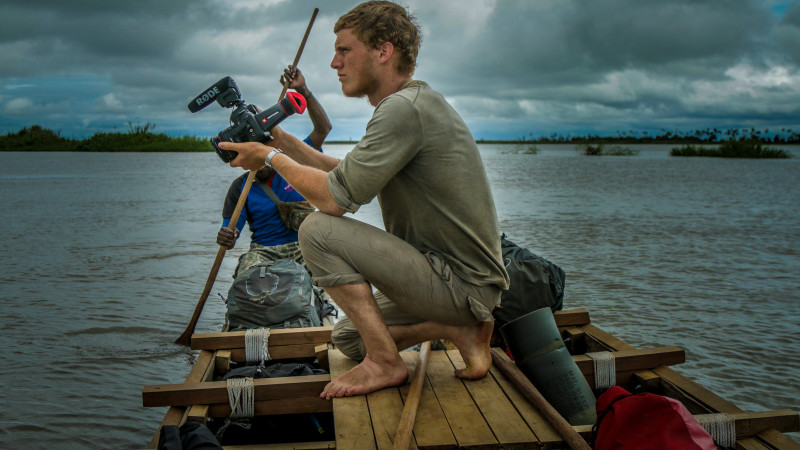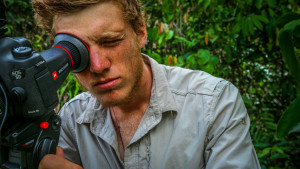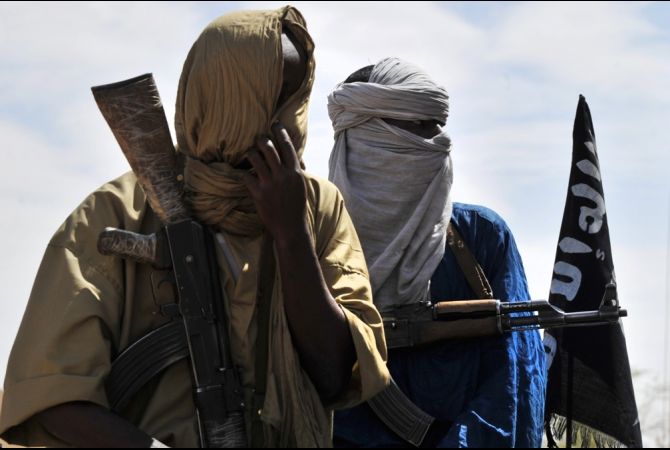A lot of adventurers head out into the wild with the intention of producing a documentary to showcase their exploits. Unfortunately very few actually make it to edit, and even fewer make it to an editorial level that is more than just narrated b-roll.
To make your video more compelling (in my opinion), you need a good mix of shots, namely…..
- Interviews: IV, subject talks to person who is off camera. This can give structure to a story, and is usually talking in retrospect or anticipation.
- Pieces to camera: PTC, subject talks to camera to give the viewer an idea of what is going on and how they feel.
- Reality: Filming the subject doing things, like talking to people/ Crossing a river/ climbing a cliff/ chopping down a tree etc.
- General Views: GV, pretty shots of the surrounding scenery/ relevant objects to the scene. Can be used as a transition shot between sequences or something to overlay narration.
One of the most important things to remember, is to always keep filming. You need lots of material to produce a one hour documentary. For my expedition into Papua New Guinea, we recorded roughly 1TB worth of material, yet we used only a fraction of it in the production, and still I found it wasn’t quite enough. To make a quality doc, you need lots of quantity, of varied and well shot footage.
If something really bad happens on your expedition, or you are feeling angry, exhausted or upset, film it. You don’t have to use it, but at least you have it. People may become irritated if you are filming in these down moments, but invariably they will be grateful later on when these tough parts of the adventure can be shown in the doc. The bits with high emotions or jeopardy is what will makes your production interesting. Unfortunately a lot of the time, these moments are when you feel least like filming, because you are scared, pissed off or exhausted. But you have to remember that nobody is that interested in seeing you happily walk through a jungle or over a mountain, but they are interested if you nearly kill yourself crossing a fast flowing river in a jungle, or you drift into a rebel occupied village, or your camels run away leaving you stranded in a vast desert. Of course filming day to day sequences is important; things like what you eat and what you sleep in gives something for people to relate to, but adding in an eclectic mix of highs and lows spices the show up.
When shooting moments of interest, you need to remember to film sequences. Every time you pull out the camera for anything other than a GV, remember to get a wide shot of the subject area (zoomed out), and a tight shot of the subject area (zoomed in). For example, If there is a man with a bow and arrow talking, shoot a wide opening shot of him talking, then a tight shots of his face as he talks, and a tight shots of his arrows. This ensures that in edit things can be cut together nicely, so there isn’t just one wide shot of someone talking for half a minute. Very generally speaking the viewer gets bored of a shot after 4 seconds, so have something to cut it to to keep it interesting. If you have a fixed lens camera, just get closer or further away for the wide and tight shots.
Try to give sequences a beginning, middle and end. For example, if someone is out fishing on a boat, remember to film them getting into the boat, so in the documentary you don’t just pull straight to a shot of someone on a boat fishing, it won’t have context. The middle of the sequence would be them catching a fish, and the end a wide shot of them in the boat on the water. It can be tough remembering to do all this, because on an expedition you will be shooting reality as opposed to anything scripted, and in harsh conditions. Take a look at this video of me on a training day. It isn’t perfect as a sequence, (it crosses ‘the line’ once or twice) but it gives you a general idea of beginning a sequence (wide open shot of me walking up), shows a middle part (me drinking soup from a flask with my Kat my girlfriend, notice variety of wide and tight shots), and a end part (Kat and I leaving). This was all shot on a single GoPro on a tripod, there was no third person.
Getting the sound right is a big issue. If the picture quality is great but the sound sucks, it will automatically look quite amateurish. The inbuilt microphone on pretty much any camera is of poor quality. If you are filming on mini-cameras (GoPro, Drift, etc) record the sound separately (on a zoom recorder, or something similar) and sync it all up later in edit. If you are using a DSLR, buy a half ‘decent’ microphone (I.e. A Rode video mic pro will do). Remember to record ‘wild tracks’ if you get the chance, (that is the sound of rivers, villages, the sea, anything you think that could be overlayed over footage).
Filming conversations with locals can be difficult, but if you are making an informative documentary and not just an adventure video, it is in my opinion vital. Usually I will keep the camera filming the local and remember all the questions that my expedition partner asks them. Then once the local has stopped talking, turn your camera to your exped partner and ask her/ him to repeat the questions on camera, just so you can cut the conversation together in edit. You also need to find a way of getting the local or exped partner to give an unprompted answer for camera, for example if you ask ‘are there pirates downriver?’ They will most likely reply with a ‘Yes’ or ‘No’. But if you ask ‘What is downriver?’ They then have to reply ‘There are pirates downriver’ or ‘There are no pirates downriver’. The second set of answers are obviously more useful than ‘yes’ or ‘no’.
Once you have finished the expedition and bought all the footage safely home, go through every single clip you’ve shot, and all the sound files you recorded, and write down their details on a spreadsheet (length, location, description, date, clip number, what folder it is stored in, sequence it belongs to). This can take weeks (it took me three for my PNG series). It is painstaking but worth it later when you need to find certain shots. The amount of footage you will probably have can be quite debilitating if there is no organisation, so logging footage is very important.
Once all that is done and you know what material you have, write up a story of what you want the documentary to portray. If you shot plenty of footage, you will be able to take the documentary down a variety of routes. Once that is done, you have a plan/ framework. Then you can start editing.
A documentary showing your experiences and discoveries from your expedition is a good legacy to have. The expedition report (which you should also write up), is only accessible to an elite few, but lots of people can learn from a film on YouTube. Admittedly it is a lot of work, which is the reason why most people don’t finish their documentaries. But if you don’t know how to edit or film, learn how to do it by watching some of the thousands of tutorials on YouTube (this is how I got started, and by doing so I inadvertently kick started a career in TV). Hopefully by the end you will have a product that you can be proud of.
PNG Web Series URL:


